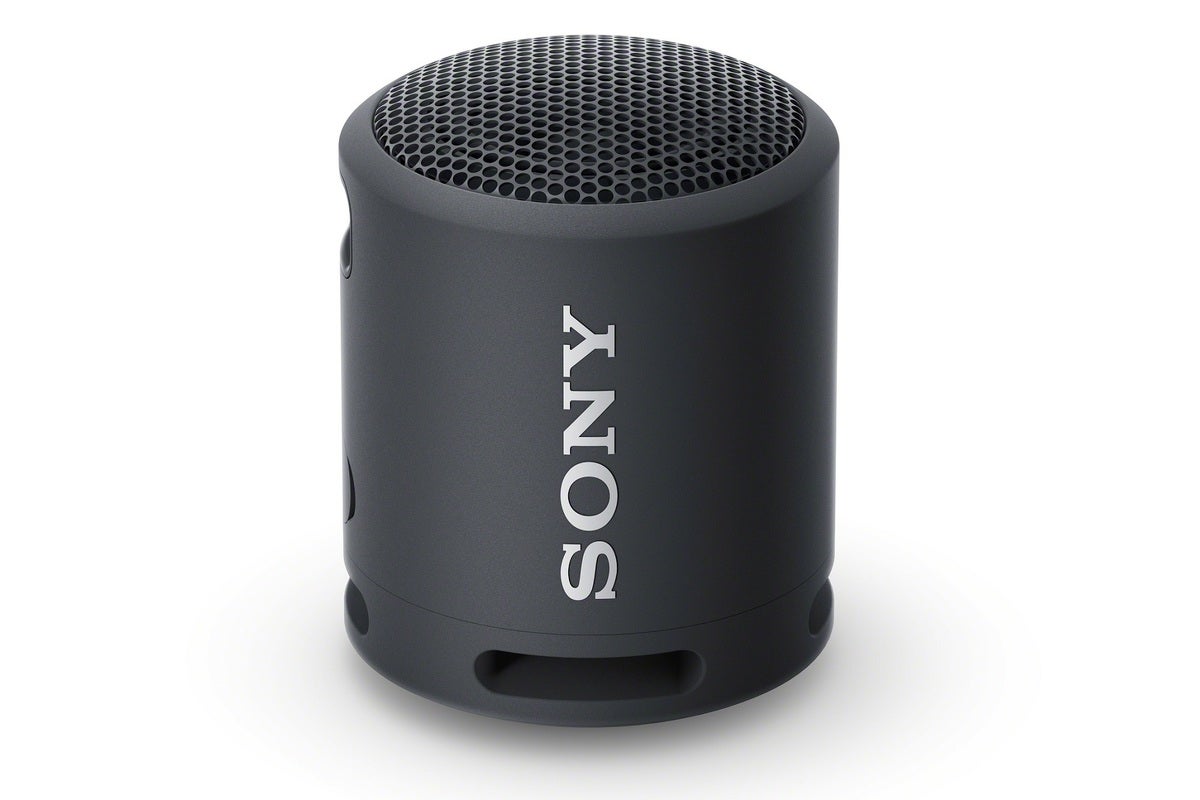This monophonic personal Bluetooth speaker is water- and dust-resistant and sounds as good as anything in this category.
Sony
Today’s Best Tech Deals
Picked by TechHive’s Editors
Top Deals On Great Products
Picked by Techconnect’s Editors
SRS-XB13 personal Bluetooth speaker
Sony’s $60 SRS-XB13 compact Bluetooth speaker is one of the best-sounding, monophonic personal speakers I’ve run across. Of course, there’s only so much you can do with its diminutive dimensions and a single speaker, but Sony seems to have maximized the potential in terms of audio reproduction. It’s also IP67 rated, meaning it’s largely immune to water and dust. You can read all about IP codes in this other story.
Design and features
The SRS-XB13 measures just under four inches tall with a diameter of around 2.75 inches. This is usually a recipe for a severe lack of bass, as low-frequency waves are far longer than the interior of the speaker. Sony ameliorates this somewhat by augmenting the 1.8-inch top-firing driver with a passive driver sending waves out side ports near the bottom of the unit. They may employ other tricks, but the result is unusually strong bass—for this size speaker.
This review is part of TechHive’s coverage of the best Bluetooth speaker, where you’ll find reviews of the competition’s offerings, plus a buyer’s guide to the features you should consider when shopping for this type of product.
 Sony
SonyThe controls for Sony’s SRS-XB13: Just behind and above the openings is a passive driver mirroring the lower frequencies produced by the top-firing main speaker. Just to the right of the controls is a rubberized plug covering the USB-C charging port.
As you can see above, the standard Bluetooth speaker controls are present, as well as a microphone for use during phone calls and with your voice assistant. The power button is, well the power button. The Bluetooth button is for pairing with phones, etc. (short press) or another Sony speaker as a stereo pair (long press).
The plus and minus buttons are single function—raising and lowering the volume—while the play/pause button you see has multiple additional functions: answer/end a phone call, and invoking either Google Assistant (Android) or Siri (iPhone) via long press.
The reason I dove into such detail about the button functionality is that the included operation guide seems bent on proving that a picture is not always worth a thousand words. There is a Help Guide online that delves into these details as well.
The SRS-XB13 is available for $60 in coral pink, lemon yellow, light blue, taupe, black, and powder blue to match your mood or sense of style. Sony didn’t list the wattage of the unit, but I’d guess around 5-10 watts from the volume the unit produced. Run time from the battery is claimed to be 16 hours, and I saw 6 of those before I put this article to bed.
Sound and run time
There’s really only so much you can do about producing bass when the length of the air chamber inside a speaker is smaller than the wave frequency you want to produce. Sony claims 20Hz to 20,000Hz frequency response for the SRS-XB13; however, there will be a huge dip around the 100Hz mark if you graph that.
Caveat aside, while the Extra Bass moniker might be a tad misleading, the SRS-XB13 produces more bass than any other speaker its size I’ve ever tested.
 Sony
SonyNot shown on any of these images is the handy, removable wrist/backpack strap.
So, it’s not very sub-wooferish, but the sound from this tiny speaker is as good as you’ll find in the category. It’s not overly loud, but the naturalists will thank you for that. It’s not a party speaker. The midrange is nicely defined, and there’s enough high end that nothing sounds choked or smothered. At least if you aim the top speaker towards you.
The SRS-XB13 can be pair with a second Sony speaker to produce true stereo, but the company didn’t send me a second to test that. From past experience, I’m guessing the improvement would be noticeable. Especially as you can space them well apart for wider than normal (single-unit stereo) soundstage. Also, I’ve never heard any stereo reproduction that I didn’t like better than the mono version.
Bluetooth 4.2 is on board, and the SRS-XB13 connected quickly in my hands-on. I also managed about 7 to 8 of the 10-meter range offered by the technology in my challenging apartment with its chicken-wire laden walls. I was at six hours of play time (Sony claims sixteen hours of run time) and counting in my listening tests with the SRS-XB13 still running strong.
Conclusion
As long as you’re aware of the sonic limits of monophonic speakers of this size, then the SRS-XB13 is as good or better than anything similar that’s out there. I’d love to be able to tell you how they sounded paired in stereo, but you’re on your own for that.
Note: When you purchase something after clicking links in our articles, we may earn a small commission. Read our affiliate link policy for more details.
SRS-XB13 personal Bluetooth speaker
This small, IP67-rated speaker is as good as it gets for its diminutive size, delivering more bass than its rivals. Buy two and combine them into a very portable, and very stereo solution.
Pros
- Good monophonic sound
- Super portable and attractive
- More bass than most speakers this small
- IP67 rated (water and dust resistant)
Cons
- Still not a ton of bass compared to larger speakers
- Not overly loud
Jon is a Juilliard-trained musician, former x86/6800 programmer, and long-time (late 70s) computer enthusiast living in the San Francisco bay area. [email protected]


